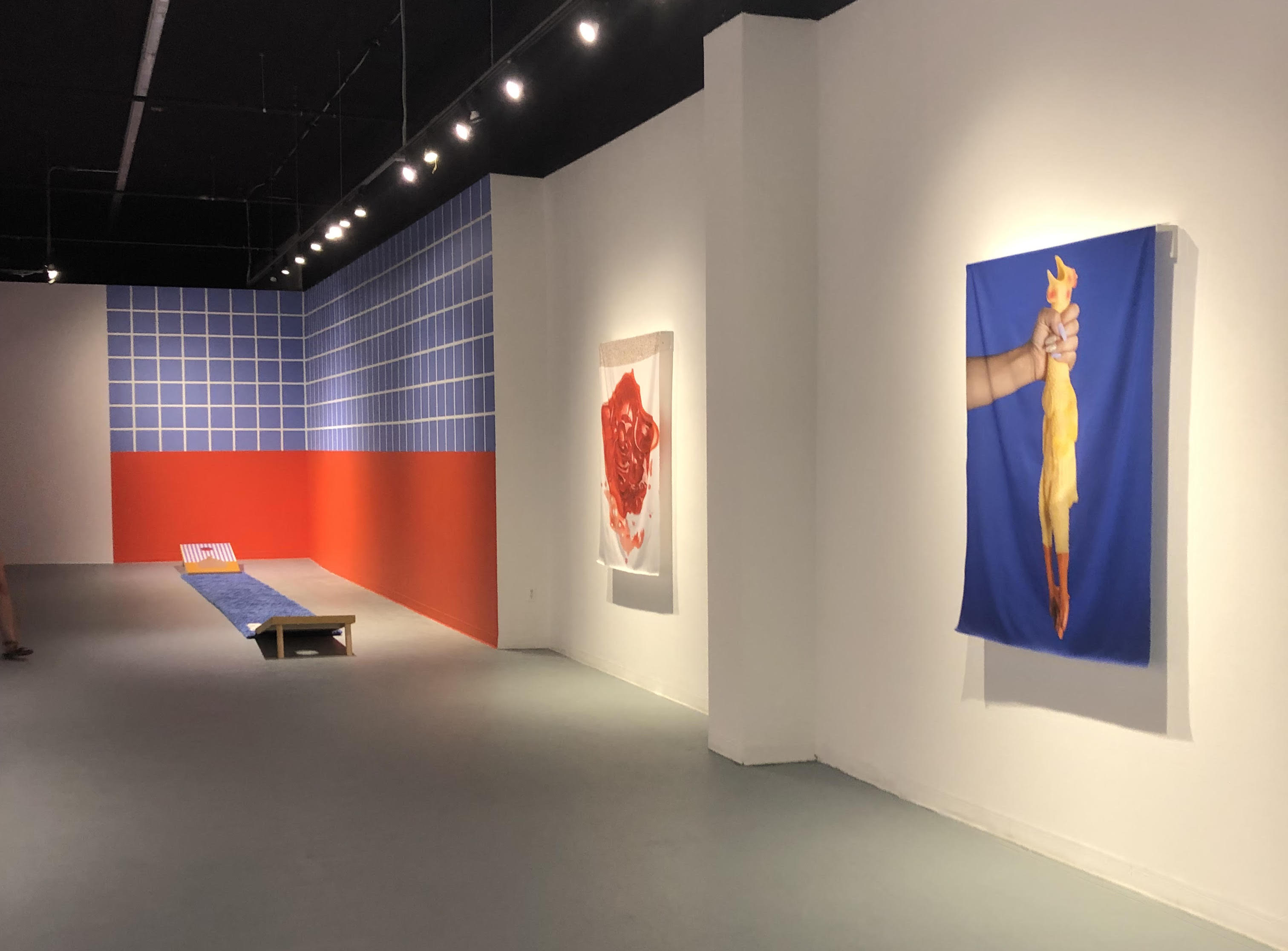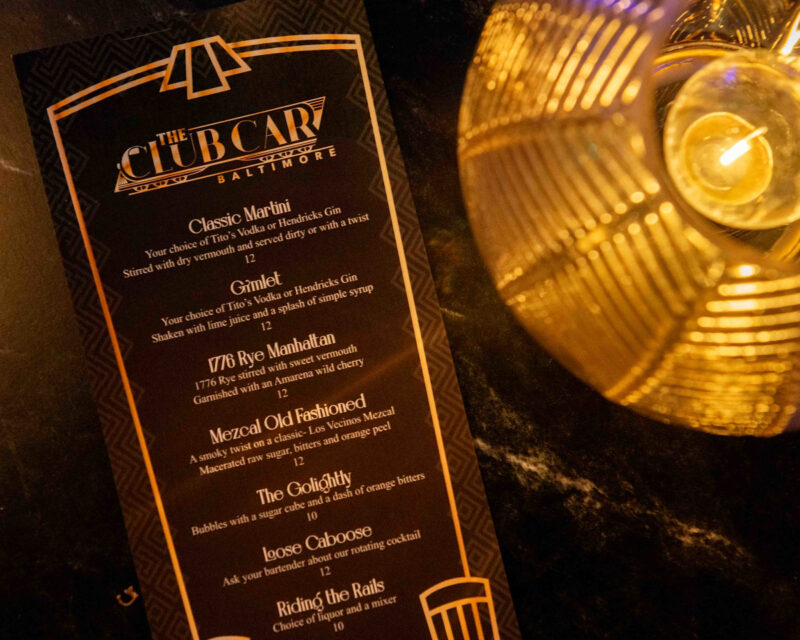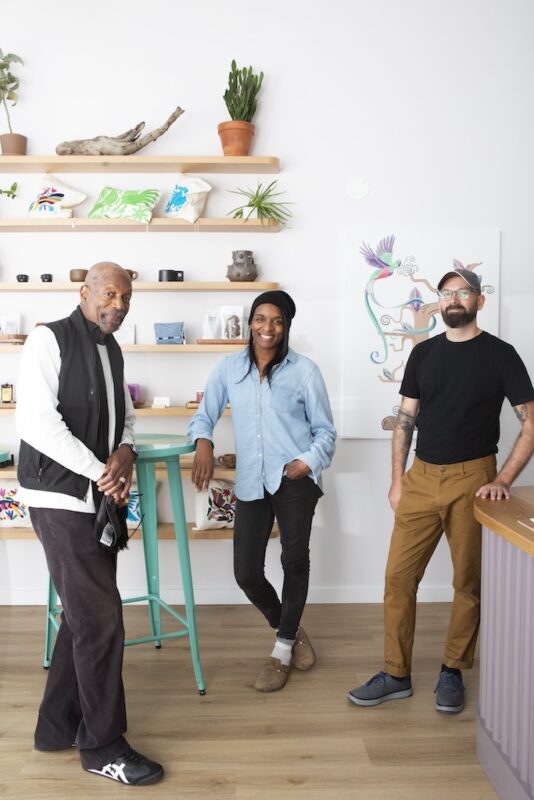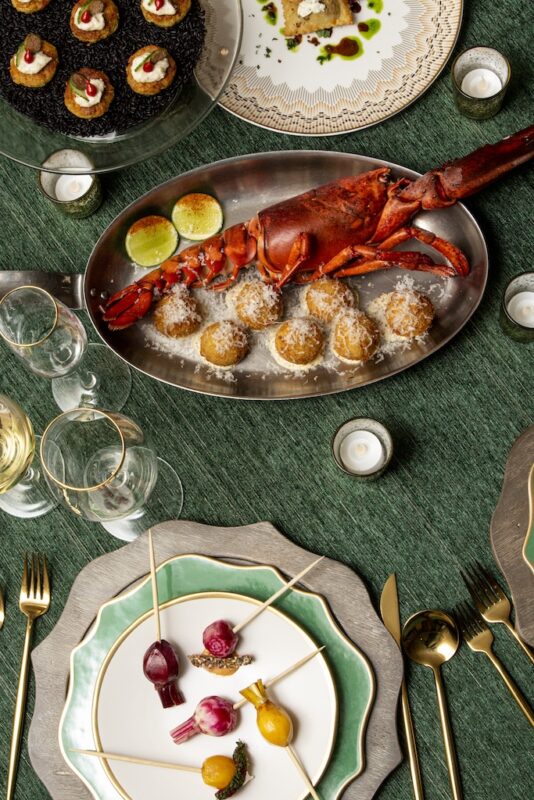As a kid, I was exposed to Venezuelan, Colombian, Italian, Peruvian, Argentinean, Japanese, and Chinese cuisine, but whenever we had family reunions, traditional Venezuelan food was always present. Around Christmas, we always got together to prepare a typical Venezuelan food called hallacas, which is corn dough stuffed with beef, pork, chicken, olives, and wrapped in a plantain leaf. Every family member got a task to either clean the leaves, mix the dough, or wrap them, and we would spend the whole day making them.
After years passed and I left my native country, I began to contemplate those memories, how hallacas connected us, and also how those traditions may be lost in the future due to migration, assimilation with other cultures, or simple dietary changes. As a result of being exposed to the traditional food of my home as well as cuisines from other places, I became interested in how traditional cuisine is an archive of culture—its recipes passed from generation to generation—while fusion cuisine combines the ingredients, traditions, and cooking techniques of other cultures to create a new hybrid.
The power of food comes from the person creating it as well as from the environment where you experience it. Both traditional cooking and fusion play a big part in Baltimore’s dining scene, where a large immigrant population creates opportunities for people to experience different types of culinary traditions, including Ethiopian, Japanese, Korean, Salvadoran, Mexican, Italian, Indian, Venezuelan, Italian, Peruvian, and others. Most of those restaurants prefer to keep their traditional plates and ingredients, but finding those ingredients may be limiting or difficult to obtain, prompting chefs to experiment and innovate to attract more customers.
As soon as I stepped into El Salvador Restaurant, I felt a sudden surge of nostalgia: the smell of parrilla, the sound of families talking in Spanish, the Mexican music in the background, and the feeling of safety. That vibe reminded me of my home and family reunions in Venezuela. Heber Portillo, the owner and a chef at one of the most-visited Salvadoran restaurants in Baltimore, greeted me with a big smile and handshake. We started talking about the impact he and his team have made in Baltimore over his last 26 years, being on Broadway in Fells Point. Heber has built a strong bond with the Latinx community by captivating his audience with Salvadoran, Mexican, and Honduran cuisine, as well as creating a fun and familiar atmosphere with colorful landscape paintings on the walls, plants, fake fish, and Salvadoran decorations.


Maria Sanchez: What food traditions are you bringing together and how did you decide to combine different types of food? What does fusion mean to you and what rules do you follow in creating your recipes?
Heber Portillo: We started with Salvadoran food, then we added Mexican food because we had a lot of Mexican customers and their food is more recognized by the American population. A few years ago the Honduran community started to grow and a lot of clients started to come and ask for their traditional plates. And that is when we tried to make more plates for them, like chicken with fried plantains, La Paleada de Honduras, among others. We try to satisfy our clientele. El Salvador is neighbors with Honduras and Mexico and for that reason we try to include their traditional plates.
Who taught you to cook or inspired your love of cooking?
I learned here, at the beginning I did not know how to cook. My sister came to help me. She is a chef, so I learned here throughout the years. My sister came down from Washington DC, she was recently married and started working with me for some years, until she opened her own business.
I didn’t like cooking much before but I had to do it out of necessity, now I know everything about the kitchen. I supervise. I learned every time there is a missing cook, I get into the kitchen to help and to take out plates.

What kind of atmosphere did you create in your restaurant space and how does it correlate to the cuisine you serve—either traditional or the fusion?
The design of the restaurant is more Salvadoran, the emblem of the restaurant is Salvadoran. It’s a Salvadoran style for its paintings from artists from there, that is the distinction, our logo, the name, that identify us as a Salvadoran restaurant. For the music, sometimes we play Salvadoran music, but we are more diverse; right now there is Mexican music playing upstairs. Our clients like to listen to that type of music.
What are your favorite ingredients to work with?
We use tomato salsa, which is a popular ingredient from El Salvador. Also some spices that has cumin, cilantro, black pepper, and we use as well loroco, which is a traditional flower from El Salvador that is used for plates like pupusas. Sometimes we also use gravy, even though is an American ingredient.
What is your most popular dish or dishes? Why do you think so and was this a surprise?
La Mariscada de Siete Mares (a stew made with chicken, tomato, fish, and seafood broth), la Carne Asada (grilled and sliced beef), las Pupusas Salvadoreñas (thick flatbread made with cornmeal and stuffed with either cheese, beans, or loroco), are the most popular meals. Las pupusas are a traditional Salvadoran plate, known almost worldwide; it is our favorite dish. If they are not Salvadoran, people are always curious to try them, and they usually come here for them.


How has Baltimore impacted your cooking and your business decisions?
At the beginning it was hard to attract the public because there were not too many Latinos around the area. But my perseverance helped me, I survived three years. I started in 1993 on the first floor, it was small and had no license to sell alcohol, just selling food was difficult. In 1997 I did the second floor and I bought the liquor license, and that is when everything changed. So, the first three years were for perseverance, surviving. I never gave up, but other businesses around here did. Most of them were struggling for a year or two, and decided to close because they preferred to work for a company that would allow them a better income.
What food traditions do you see being passed on from generation to generation in the future? What does it mean to carry a family history within food?
It is important to maintain those traditions because we are not eternal. I’m almost 30 years in business. After 30 years, maybe I’m looking for a way to retire, do something else after 30 years. However, it is important that someone else resume our traditions, but I am not sure who. It can be an entrepreneur. I am not sure if my children like this business. They go to college, but I do not know if they would like to work as many hours as I am here. In this business I have to dedicate a lot of hours, I am used to being here for 10 to 12 hours, but this younger generation does not like to be in one place for 12 hours.





El Salvador Restaurant
207 S. Broadway, Baltimore 21231
elsalvadorrestaurantmd.com






